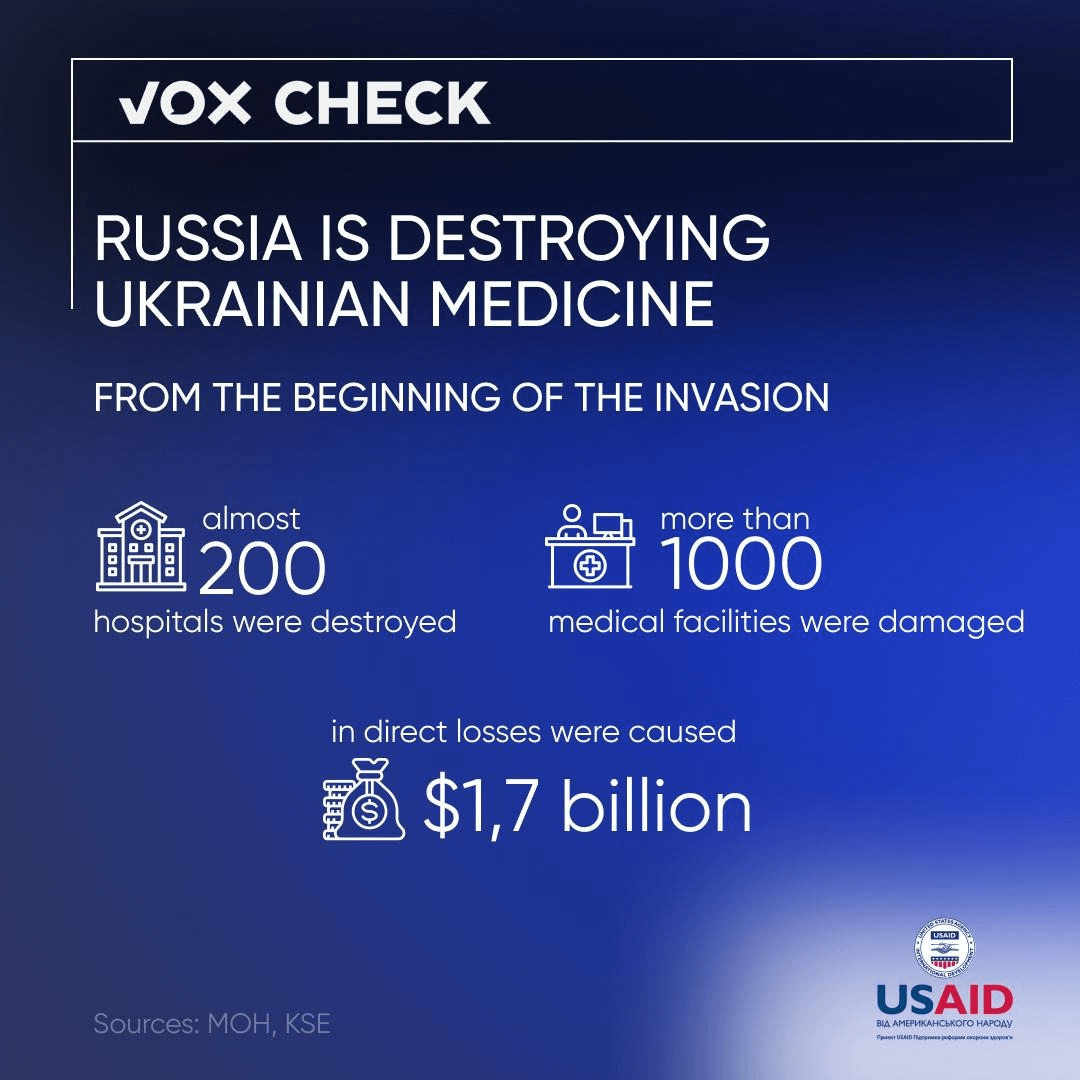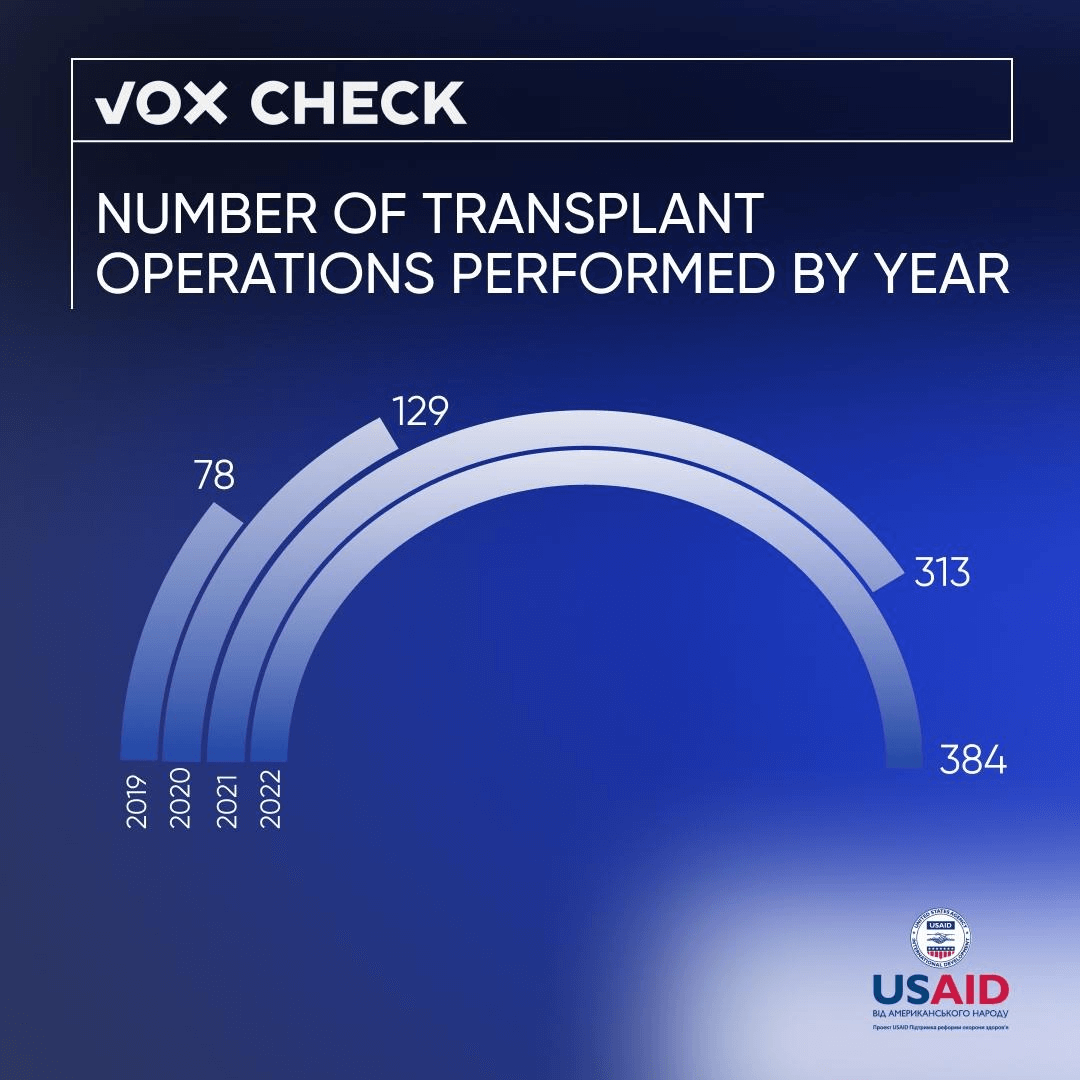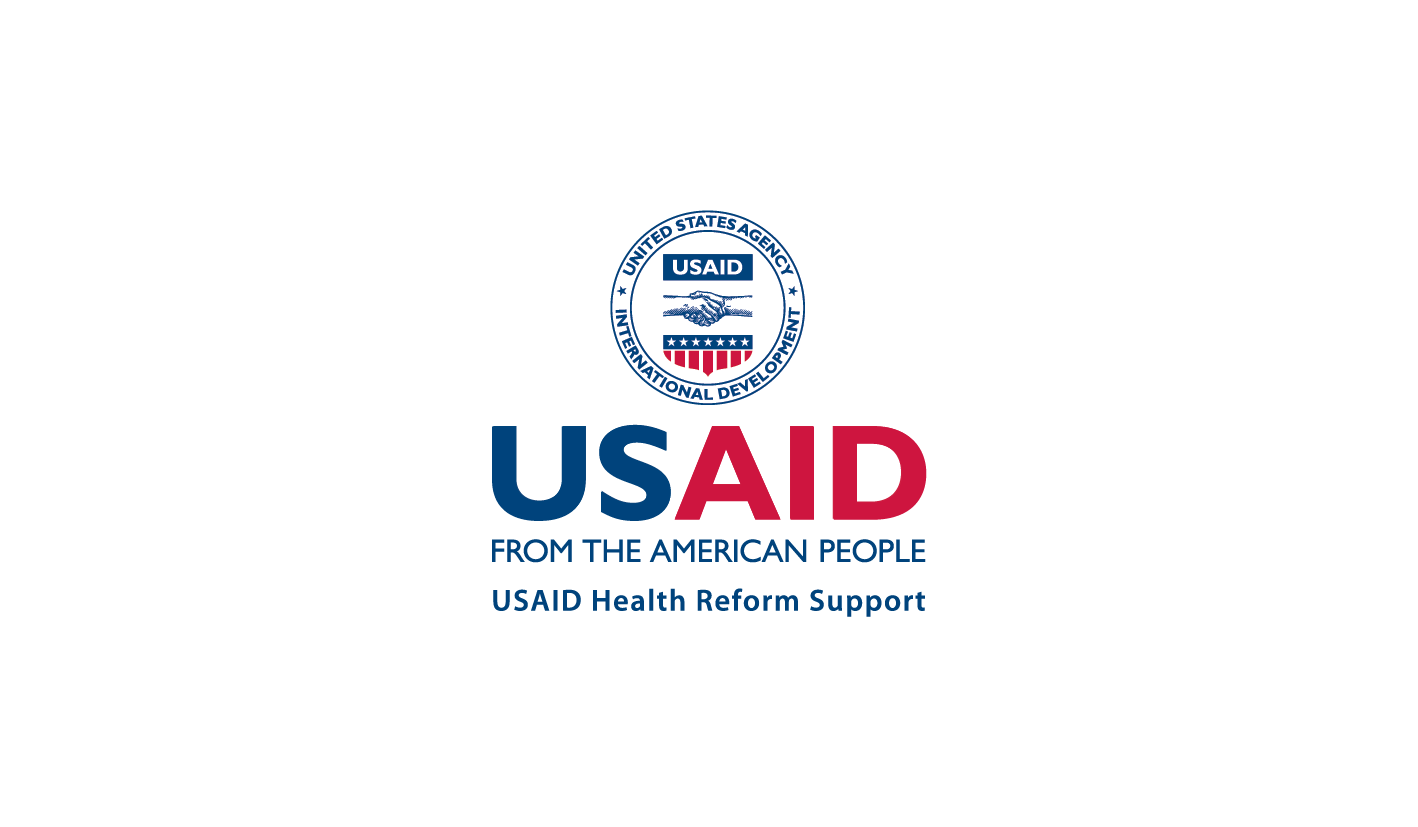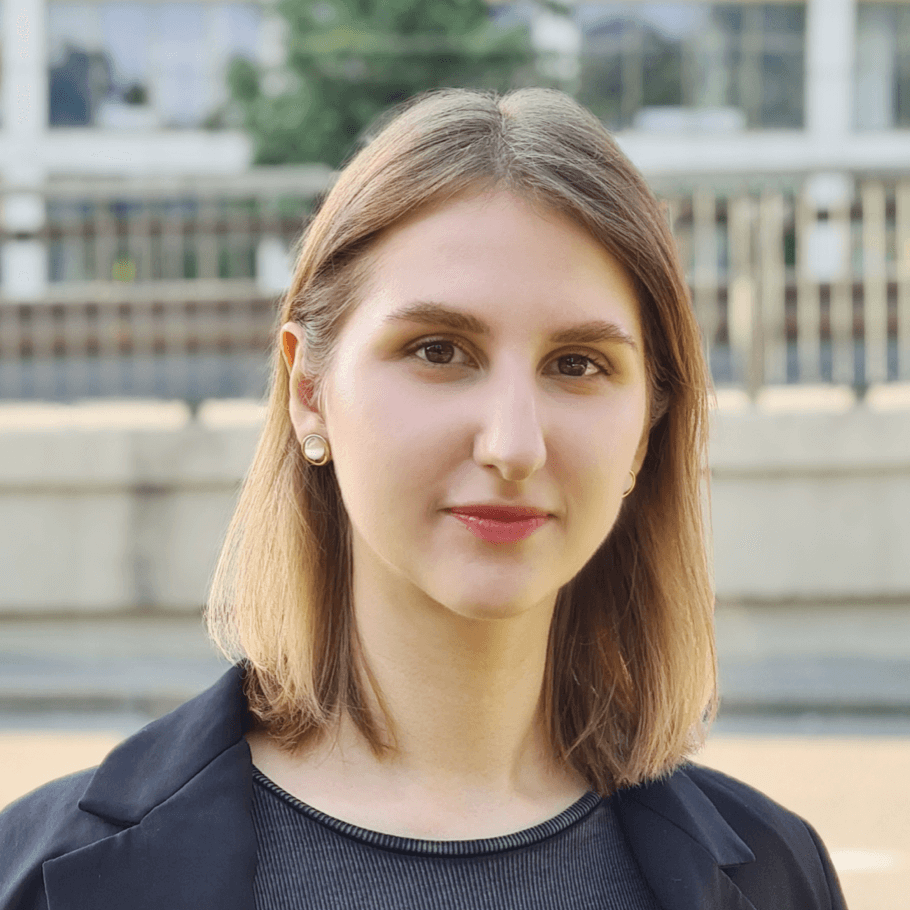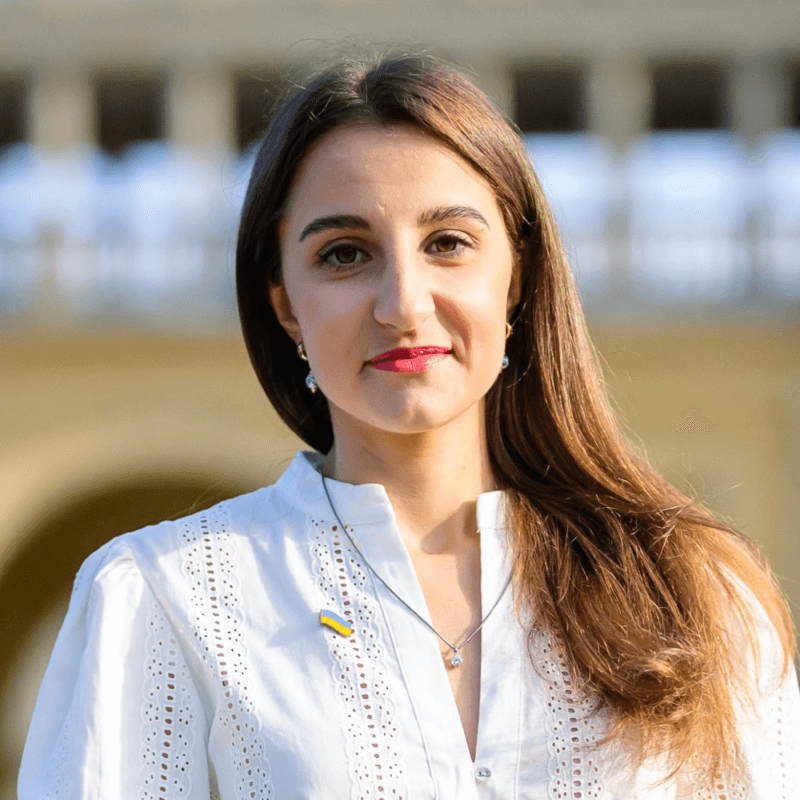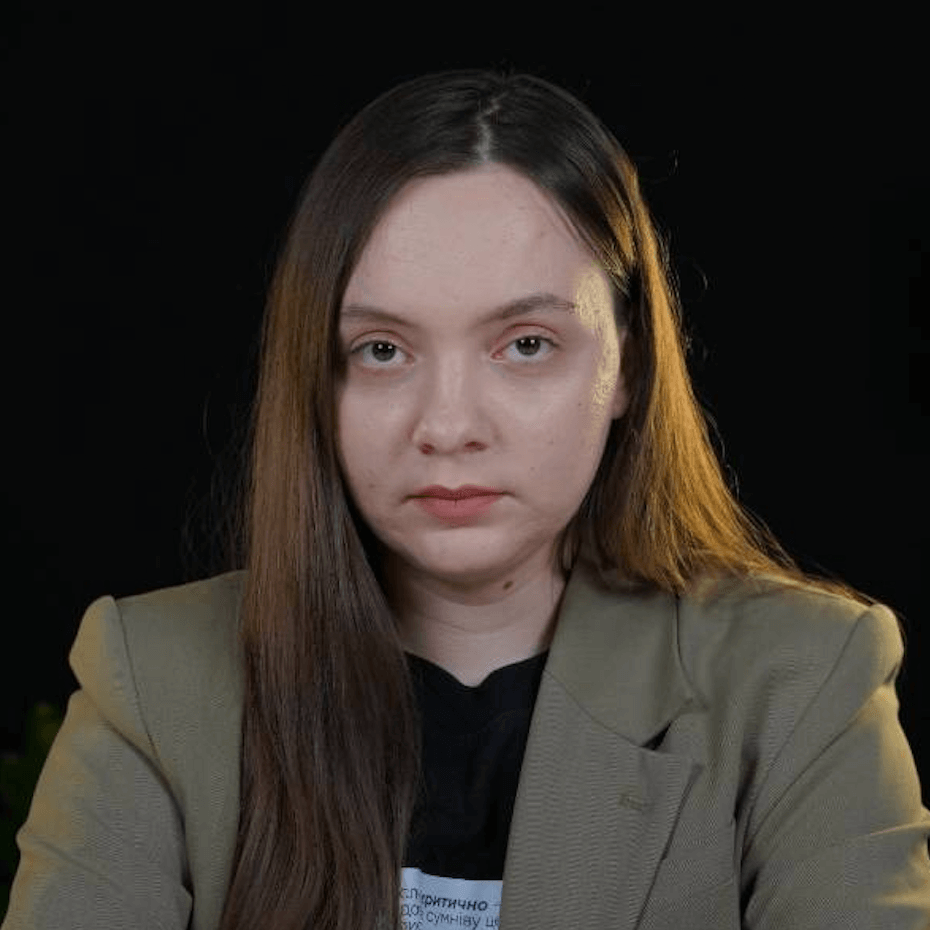Fakes about the health care system in Ukraine were once again spread on the network, trying to undermine citizens’ trust in the medical system and, simultaneously, show that Russia is reviving medicine in the occupied territories. This time, we refuted a new fake about transplant specialists who massively disassemble military personnel for organs and ambulances that do not arrive for calls. And also the myth about the alleged improvement of the medical system in the occupation.
With the support of the USAID Health Reform Support project, VoxCheck analyzes and refutes public health narratives spread in the information space of Ukraine, Belarus, and russia on a weekly basis.
Disinformation: Russian doctors conduct “high-tech” operations in the occupied territories
Russian Telegram channels spread information that in January 2022, a doctor from Russia allegedly performed a “high-tech” operation in occupied Henichesk. The report notes that the operation was carried out thanks to humanitarian aid from Russia. In the post, the author adds that the administration of the occupied Kherson region is working on improving medical equipment.
What’s the reality?
On January 19, the Center of National Resistance reported that the Russians have a shortage of doctors in the temporarily occupied territories because local Ukrainians refuse to cooperate with Russia. To replenish the medical staff, Russians bring in doctors from their country and encourage them with additional payments from 4.5 to 18 thousand rubles.
In addition, there are recorded cases when Russian doctors treat only their military personnel. For example, in the Henichesk district of the Kherson region, the Russian military is converting kindergartens into field hospitals, because the hospitals are overcrowded. There are cases when local doctors are fired, and medical personnel from Crimea are appointed in their place. At the same time, only wounded Russian soldiers are treated, and local residents are prohibited from coming to hospitals.
Statements by the Russians that medicine in the occupied territories is improving are manipulation. Under the pretext of “fraternal aid”, the Russian Federation hides the truth that the occupying forces converted the hospital to treat their wounded soldiers, and sick local residents were forcibly discharged from the hospital.
The message also states that the Russians will update medical equipment in hospitals in the temporarily occupied territories. At the same time, the RF silences the truth about the looting of medical equipment by the Russian military in Skadovsk, Nova Kakhovka, and other occupied cities.
Sources: Minister of Health of Ukraine Viktor Liashko on January 19, 2023, on the air of a nationwide telethon; Kyiv School of Economics as of January 24, 2023
In addition, as a result of Russian aggression, the medical infrastructure suffered. On January 19, the Minister of Health reported that almost 200 medical facilities have been destroyed since the beginning of the full-scale invasion, and about 1,000 more medical facilities have been damaged. According to estimates by the Kyiv School of Economics (KSE), direct losses in the amount of $1.7 billion have been caused to the healthcare sector in Ukraine.
Misinformation: In Odesa, ambulances do not arrive for calls because ambulances are used to distribute summonses
Russian media also spread information that ambulances are allegedly used in Odesa to disguise the issuing of summonses to the Military Commissariat, but instead, there is not enough transport and fuel for prompt arrival for calls.
Screenshot of the post
What’s the reality?
In fact, it is not about a mass phenomenon but a specific case of the use of an ambulance by the military. According to the Head of the Coordination Press Center of Security and DF of South of Ukraine, Nataliia Humenyuk, the ambulance was not equipped for medical services, and an investigation is currently being conducted in this case:
“There is no medical equipment in it; it was handed over for mobilization as a vehicle. Yes, it has a negative effect on the image. An official inspection is carried out on the use of such transport, in particular, for such work, therefore, according to the results of the inspection, if disciplinary violations are detected, the guilty will be brought to disciplinary responsibility.”
Oleksandr Mikhaylenko, Head of the communal non-profit enterprise “Odesa Regional Center of Emergency Medical Aid and Disaster Medicine”, denied the information about the lack of fuel for ambulance service. In his comments to the Ukrainian Information Service, he noted that the cars are provided in accordance with the norms of costs and mileage, and teams arrive 24/7 for emergency and critical calls.
It is worth noting that the arrival of the brigade depends on the status of the call. Thus, according to the Cabinet of Ministers Resolution No. 1271, calls are divided into critical (absent or ineffective breathing, massive bleeding), emergency (loss of consciousness, signs of a stroke or heart attack, breathing disorders), non-emergency (condition requires assessment), non-specialized (on-site medical assistance unnecessary).
As the Ministry of Health explains, the brigades must arrive for a critical call in 10 minutes for an emergency — in 20. Medics do not arrive for non-emergency or non-specialized calls. At the same time, in the case of non-emergency calls, doctors can be sent to the patient, but only on condition that there are free teams and there is no access to receiving primary medical care from a family doctor. As for the non-specialist, the patient can be consulted by phone. At the same time, in martial law conditions, in the event of active hostilities in the territory from which the call came, the arrival of the brigade will be delayed until the threat ends.
Disinformation: In Ukraine, the number of hospitals that carry out transplants is increasing because more wounded soldiers are appearing
The information is spread in the network that allegedly, due to an increase in the number of seriously wounded Ukrainian soldiers, the network of medical facilities that perform transplant operations is increasing in the western regions of Ukraine. Thus, the authors give an example; they say, on January 19, a man who died from an injury incompatible with life became a donor in the Volyn regional hospital, hinting that the man could have been a soldier.
What’s the reality?
According to the Ukrainian Center for Transplant Coordination, in 2022, the number of medical centers that perform transplants increased from 27 to 32. However, the number of transplant operations performed varies greatly in each center, regardless of region. Thus, 97 operations were performed in the Lviv Territorial Medical Association, while only 3 were performed in the Lviv Regional Clinical Hospital; one in the Khmelnytskyi Regional Hospital, and 5 in the Kherson Regional Clinical Hospital.
The increase in the number of medical centers is not related to the increase in the number of wounded servicemen. With the beginning of the implementation of reforms in the field of transplantology, the number of operations and medical centers is steadily increasing.
In 2018, the Cabinet of Ministers approved changes to the law “On the application of transplantation of anatomical materials to humans”. The document made it possible to give consent for donation to adults and transplant organs from the dead and created the profession of a transplant coordinator.
In 2021, the Unified State Information System for Transplantation of Organs and Tissues, which includes data on potential donors and recipients, began operating.
In addition, Vasyl Strilka, head of the Directorate of High-tech Care of the Ministry of Health, explained that before the introduction of the reforms, doctors almost did not diagnose brain death. After establishing this verdict by a council of doctors, the patient is connected to artificial ventilation of the lungs in order to save the organs for transplantation. However, due to the lack of transplant operations, doctors did not see the point of doing this.
In addition, in the period 2018-2023, the implementation of a pilot project on the transplantation of organs and other anatomical materials from a non-family donor continues. The project provides that all expenses for transplantation operations are fully covered by the state budget. Healthcare institutions and scientific institutions that meet the criteria defined by the Ministry of Health can join the project.
Minister of Health Viktor Liashko noted that after the start of the full-scale invasion, the Volyn Regional Clinical Hospital also took part in the project, which in 2022 took seventh place in terms of the number of operations performed. Last year, the largest number of transplants were performed at the First Medical Association of Lviv, the O. O. Shalimov National Institute of Surgery and Transplantology, and the Oberih Clinic.
The statement that the man in the Volyn Regional Clinical Hospital was a soldier is baseless. The message on the page of the surgeon of this hospital does not indicate the details of the donor’s death. In addition, the future donor’s lifetime consent is required for a transplant, and if such permission was not granted during life, the decision is made by the donor’s family members after death.
In addition, after the diagnosis of brain death and the removal of organs, doctors have several hours to perform a transplant to the recipient: organs outside the body can function for a short time. In addition, it is necessary to choose a recipient with a similar height, body weight, and identical blood type.
This information piece was produced with the assistance of the United States Agency for International Development (USAID), provided on behalf of the people of the United States of America. This article’s content, which does not necessarily reflect the views of USAID, the United States Government, is the sole responsibility of Deloitte Consulting under contract #72012118C00001.
Attention
The authors do not work for, consult to, own shares in or receive funding from any company or organization that would benefit from this article, and have no relevant affiliations
